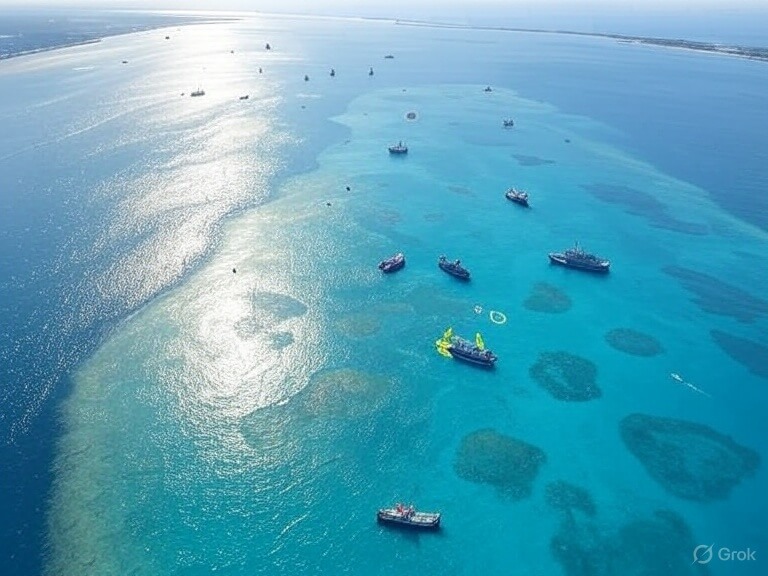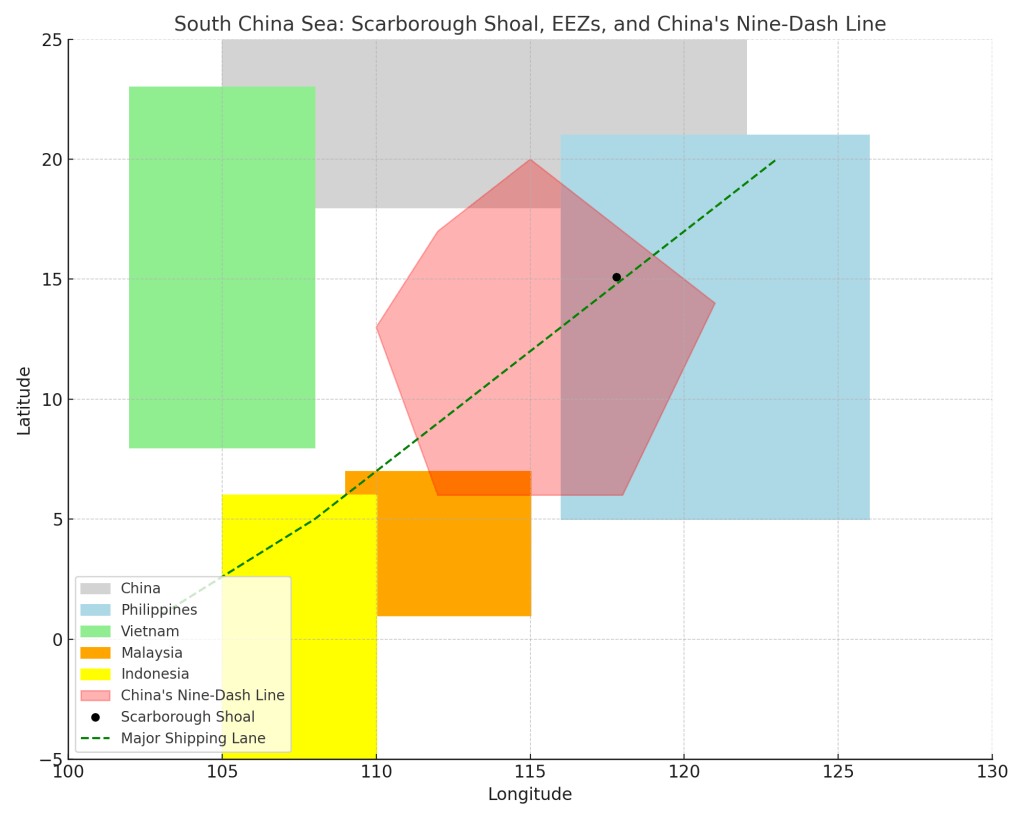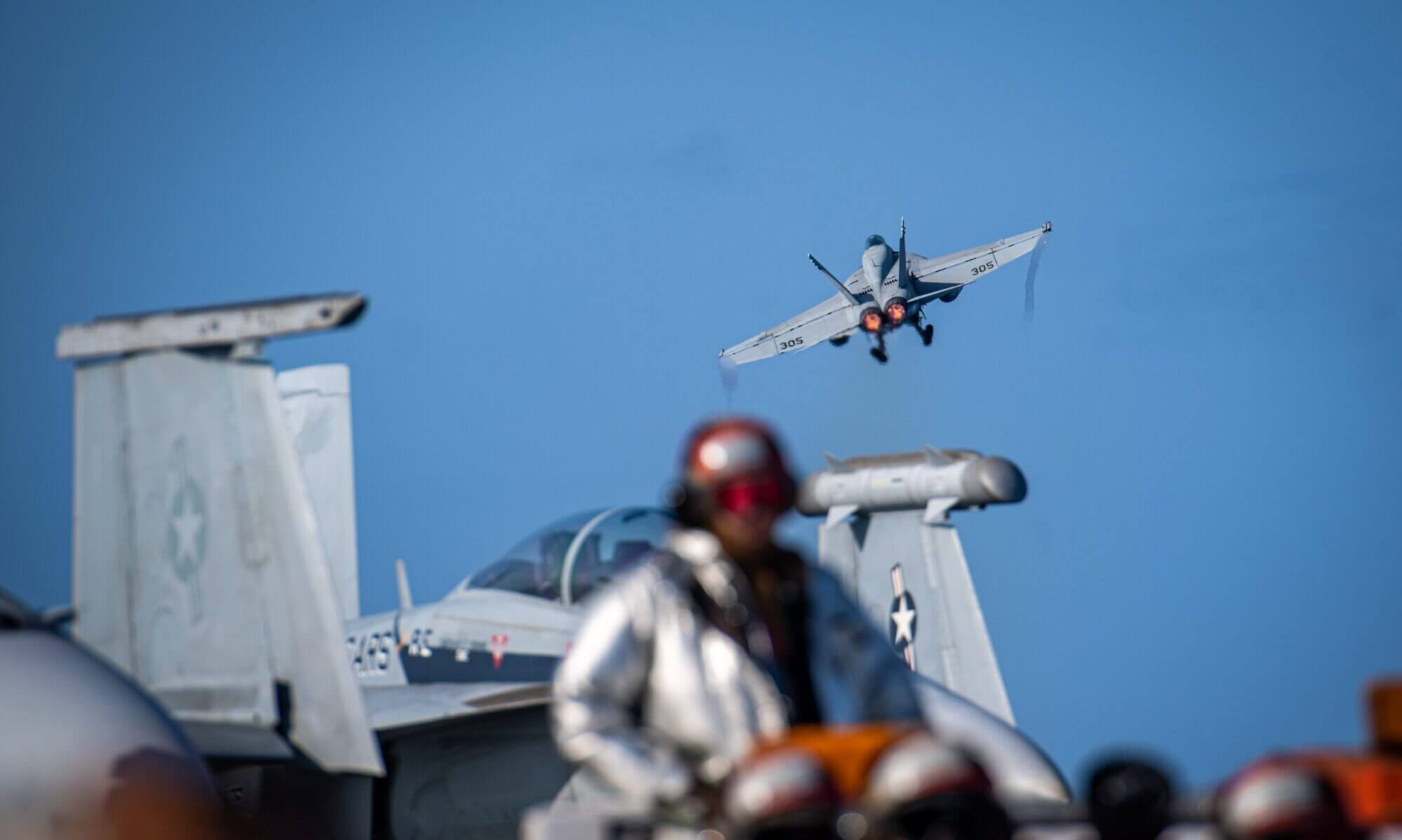A Comprehensive Series by Americans for a Stronger Navy
By Bill Cullifer, Founder – Americans for a Stronger Navy
Introduction: Why We’re Launching This Series on Scarborough Shoal
What is Scarborough Shoal?
At first glance, it’s just a triangle-shaped reef in the South China Sea, roughly 120 nautical miles west of Luzon, Philippines. No buildings. No runway. No flag.

But don’t let its humble appearance fool you.

Scarborough Shoal is one of the most contested flashpoints in the Indo-Pacific. This seemingly minor cluster of rocks and reefs sits at the heart of one of the world’s most vital sea lanes — and could very well be the next spark in a global conflict.
What Prompted This Series
We didn’t choose Scarborough Shoal at random. This series was prompted by a disturbing escalation in Chinese maritime aggression in the South China Sea — specifically at Scarborough Shoal, a small reef with outsized strategic consequences.

Recent events that brought this to a head include:
- A Chinese cutter and guided-missile destroyer collided during a botched blockade attempt of Philippine Coast Guard vessels ten nautical miles off Scarborough Shoal in August 2025.
- USS Higgins (DDG-76) sailed within 12 nautical miles of Scarborough Shoal conducting a Freedom of Navigation Operation (FONOP) — the first known U.S. military operation in at least six years in these specific waters.
- Chinese Coast Guard harassment of Philippine resupply missions.
- Dumping of concrete blocks — a likely signal of future construction.
- Swarming of the area by Chinese maritime militia vessels.

The Scarborough Shoal is quickly becoming a litmus test for Chinese expansionism and U.S. resolve.
Why Now: The Wake-Up Call
Scarborough Shoal lies just 120 nautical miles off the Philippine coast — well within their Exclusive Economic Zone (EEZ) — and even closer to America’s red lines. When China seized de facto control of the shoal in 2012, the U.S. stood back. Many viewed this as a strategic failure of deterrence.
Now, the world is witnessing the possibility of militarization of the reef — and direct confrontation with a U.S. ally. That makes this more than a regional issue. It’s a crisis in the making.
The 2012 Standoff: A Turning Point
In April 2012, Philippine authorities attempted to arrest Chinese fishermen operating illegally in the shoal. Chinese maritime surveillance ships intervened. A tense standoff ensued, lasting weeks. The U.S. brokered a deal: both sides would withdraw.
The Philippines kept its word. China didn’t.
Instead, China took control of Scarborough Shoal, effectively barring Filipino access ever since. They now patrol it with coast guard cutters, militia fishing boats, and surveillance drones — sometimes even water cannons. Construction may follow.
A Geopolitical Tinderbox in the Sea
The South China Sea is home to trillions of dollars in annual global trade. It’s also flush with resources: fish, gas, oil, and geostrategic leverage. China claims nearly all of it under its so-called “Nine-Dash Line” — a sweeping assertion that ignores international law and overrides the rights of Southeast Asian nations like the Philippines, Vietnam, and Malaysia.

Scarborough Shoal, or Bajo de Masinloc as the Filipinos call it, lies within the Philippines’ exclusive economic zone (EEZ), as defined under the United Nations Convention on the Law of the Sea (UNCLOS). In 2016, the Permanent Court of Arbitration definitively ruled that China’s sweeping claims in the South China Sea had no legal basis under international law.
China’s response? They ignored the ruling entirely and doubled down on their aggression.
My Perspective: This Isn’t Just a Reef
As a former Navy destroyer sailor from the 1970s, I understand how seemingly minor naval flashpoints can quickly spiral. I launched Americans for a Stronger Navy to bridge the gap between what’s happening on the water and what the American public knows.
When I began Americans for a Stronger Navy, I did so because I believed — and still believe — that Americans are not being told the full story.
Scarborough Shoal isn’t on the nightly news — but it should be.
This reef is about more than rocks and water. It’s about:
- Sovereignty
- International law
- Access to critical trade routes
- Maintaining a rules-based order
- The failure of deterrence
- The rise of maritime bullying
- The fragility of global trade
And the uncomfortable question: Will America act, or will we retreat?
Why Americans Must Pay Attention
Most Americans have never heard of Scarborough Shoal, but they should. Here’s why it matters to you:
- Over $3 trillion in trade passes through the South China Sea annually.
- China is testing the boundaries of international law and Western will.
- Scarborough is a potential trigger point for a wider conflict — even WWIII.
- The U.S. Navy may be forced to act, and our sailors are on the front line.
- Success here emboldens China’s tactics elsewhere — Taiwan Strait, East China Sea.
- Control of Scarborough supports China’s broader Belt and Road Initiative and maritime silk road ambitions.
If you think a shoal doesn’t matter, consider this: $3.4 trillion in global trade flows through the South China Sea every year. China is attempting to rewrite the rules of international waters. And the U.S. Navy — your Navy — is the thin blue line standing in the way.
Coming Up in This Series
- The history of Scarborough Shoal and how we got here
- The 2012 U.S.-brokered standoff and its long-term impact
- The 2016 international arbitration ruling and China’s defiance
- China’s maritime militia and “gray zone” tactics
- The importance of fishing rights, seabed minerals, and cable networks
- Allied response frameworks: QUAD, AUKUS, and Philippines mutual defense commitments
- The implications for the U.S., our allies, and our Navy
- Economic warfare potential and leverage tactics
- Technology, surveillance, and intelligence dimensions
- WWIII scenarios — and what they could look like
- Congressional and policy tools available (or missing)
- What Americans know (or don’t) about this growing threat
Each post will build context and momentum — helping readers understand why this small reef could shape the future of American security strategy in Asia and beyond.
Join the Mission
Understanding Scarborough Shoal is understanding a fault line in today’s global order. This series isn’t just about sounding the alarm — it’s about equipping Americans with insight, history, and facts so we can rally support, demand accountability, and avoid miscalculation.
If we don’t understand where the storm is brewing, we won’t know when to take shelter — or when to stand our ground.
Scarborough Shoal may seem far away. But the values at stake — sovereignty, freedom of navigation, and deterrence — are right at our doorstep.
Not to inflame. Not to fearmonger. But to educate, illuminate, and inspire action.
Please follow along, share with others, and help us shine a spotlight on one of the most important — and most underreported — strategic flashpoints of our time.
Stay with us. Read. Share. Talk about it.
Because understanding this reef might just help us prevent the next war.
A Final Thought
If a reef you’ve never heard of could spark the next major war — dragging America and its sailors into the fight — doesn’t that make it worth understanding?
Let’s chart the course together.
That’s why we launched Charting the Course: Voices That Matter—a 24-part educational series breaking down how we got here, what went wrong, and what must happen next. Our goal is simple: educate the public, connect the dots, and build the support needed to close the readiness gap before it’s too late.
Let’s roll.






